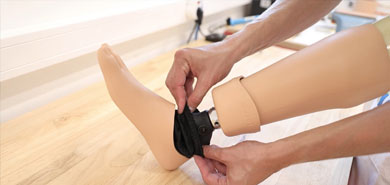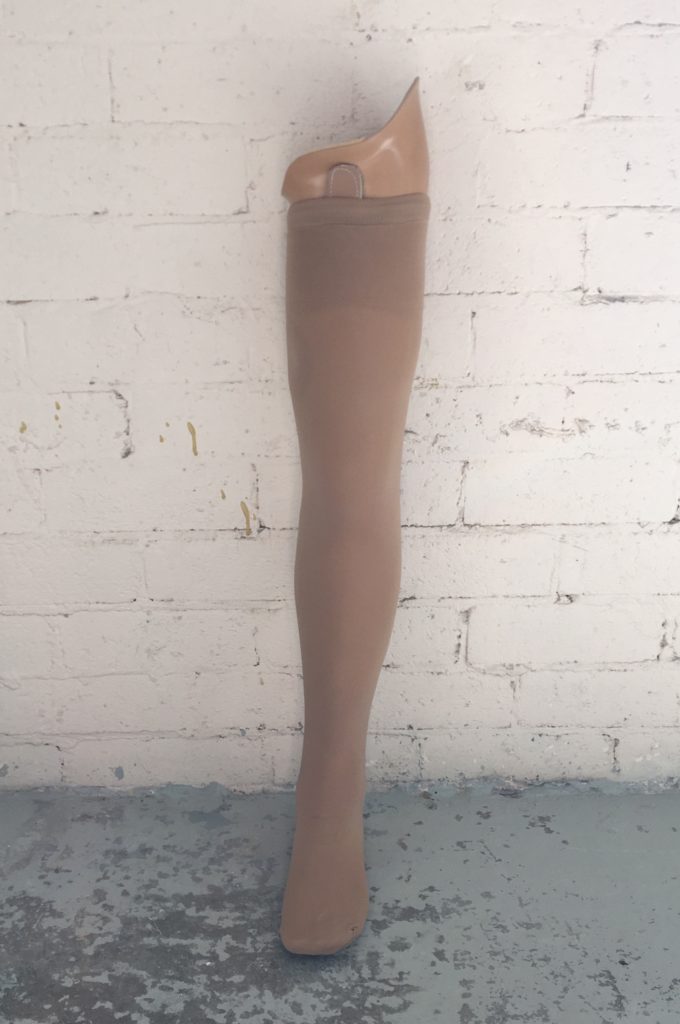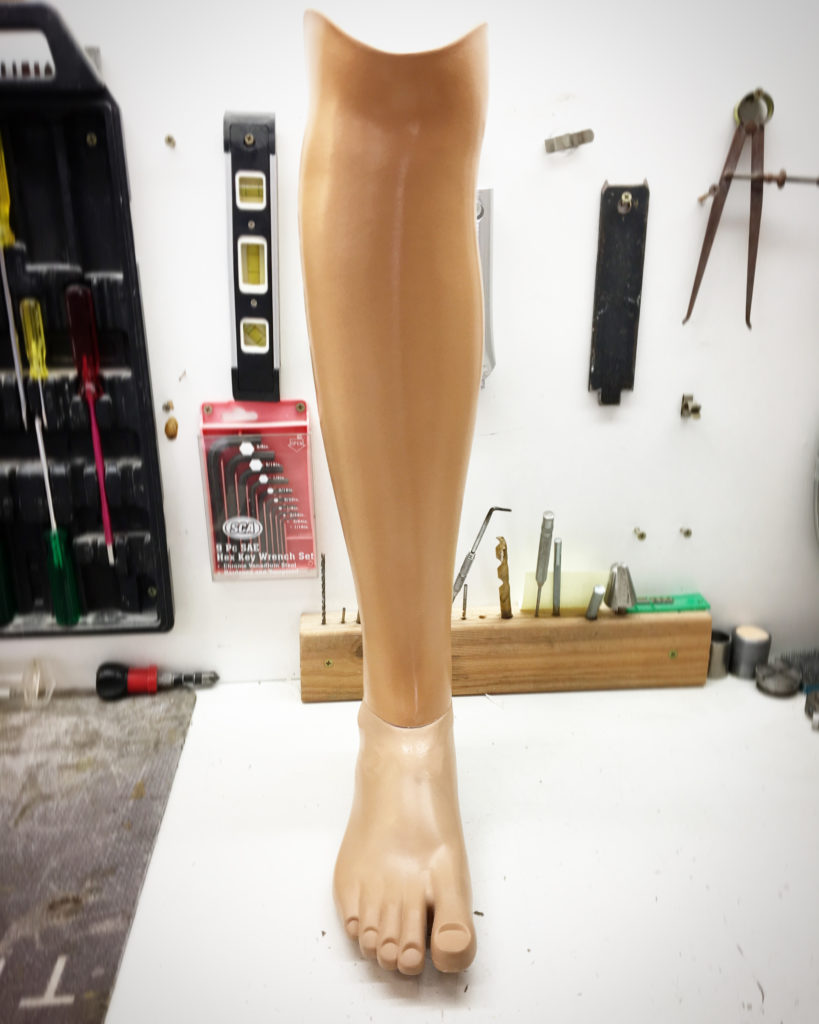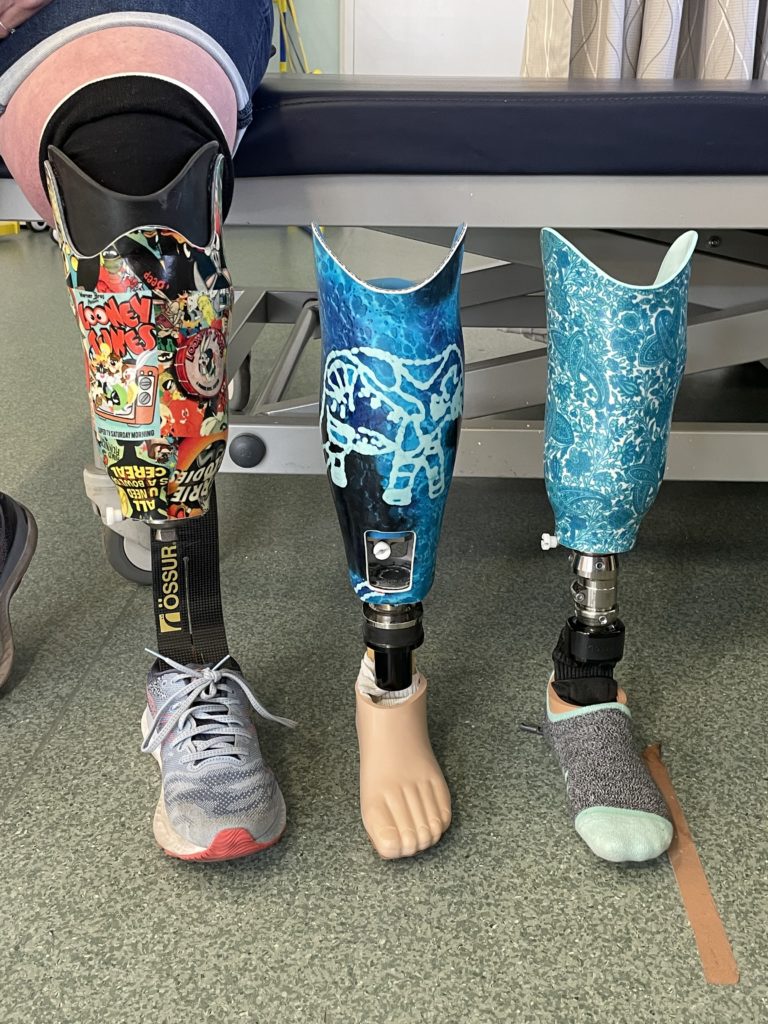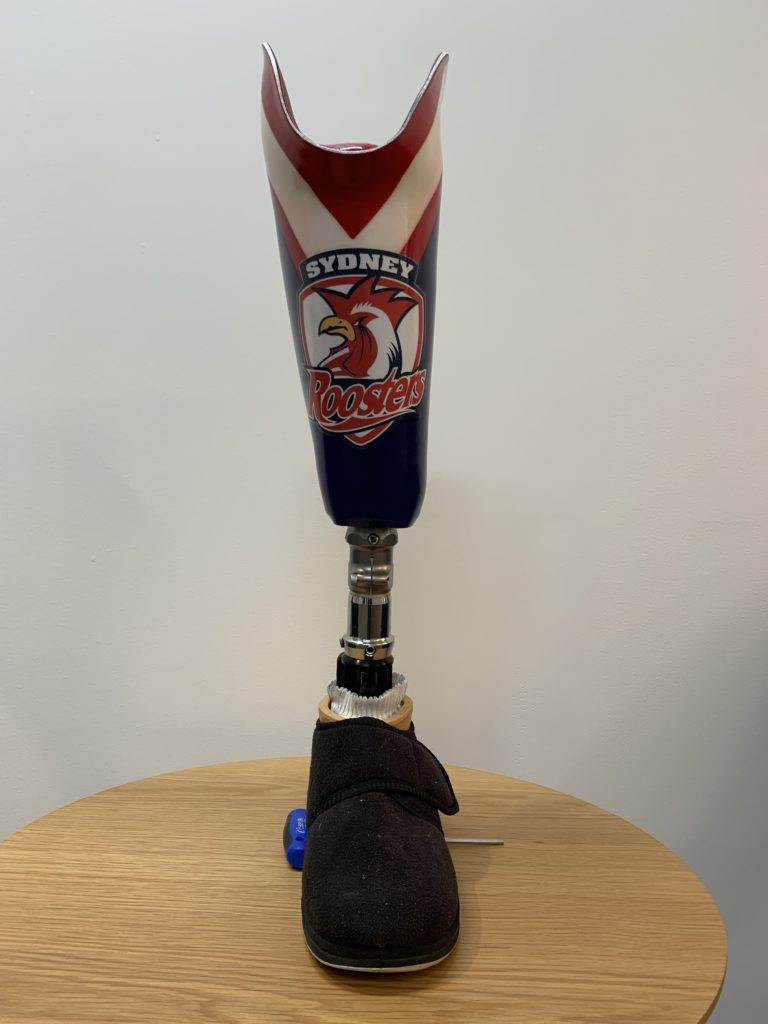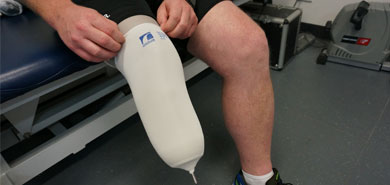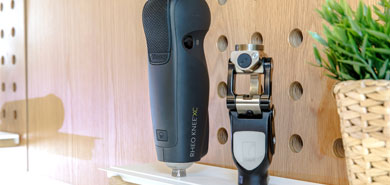The two main reasons for wearing stump socks are:
- To protect the residual limb from excessive rubbing against the socket.
- To allow the prosthesis to fit better as your residual limb changes. You may find that you wear only one sock in the morning, but have to add a second one as the day progresses. In this case, the sock is used to fill the space between your residual limb and the socket.
Socks & Pelite liners
It is important to find the right combination of socks when using a prosthesis with a pelite liner. This combination can change both throughout the day, and over the life of your prosthesis. With a pelite liner, as you reduce in volume, you may find you need to fill the space between your residual limb and the liner, and/or between the liner and the hard socket to snug up the fit. If you have any queries on how to do this, you can ask your prosthetist.
Socks & Silicone liners
Unlike in traditional pelite liners, when using socks with silicone/gel liners, the sock is used outside the liner between the liner and the hard socket which maintains contact of the silicone/gel with your skin.
Pin liners: It is important to ensure the pin is completely through the hole located at the end of your sock so that the fabric doesn’t get caught in the lock body. If this happens, it can cause the lock to stick and you will have trouble doffing your prosthesis.
Seal-in liners: If your prosthesis uses a rubber sealing ring to create a vacuum suspension, talk to your prosthetist to ensure you understand volume management for your liner type. Some do not support the use of socks. If it does, make sure that the sock is neatly tucked under the sealing ring prior to donning your prosthesis.
If you find you have reduced in volume to an extent that you are slipping inside the liner itself, contact your prosthetist as you may need a new liner, or an alternate solution to be found.
Cleaning your stump socks
It is very important to keep your stump socks in a clean and hygienic state. It is important that any socks you wear are cleaned daily.
It is important that you look after your socks and make sure you have enough to wash and wear.
Not washing your socks properly can lead to build up of dirt and other nasties, which may cause skin irritations such as redness, rash, itchiness, bumps, pimples, etc.
Tip: Never wear your shrinker sock with your prosthesis. The shrinker is to be worn to provide compression when you are not wearing your prosthesis. Wearing the shrinker with the prosthesis can cause skin irritation and/or breakdown.

DO’s and DON’TS that will help you clean your prosthetic stump socks correctly
Do’s:
- Do squeeze suds gently through the prosthetic socks and rinse with clear warm water.
- Do use an approved wool detergent to wash your socks, preferable by hand.
- Do roll the socks in a towel to blot out the extra water.
- Do hang socks to dry.
Dont’s:
- Do not use hot water as this might cause your socks to shrink.
- Do not twist and rub wet socks as this may cause the socks to loose their shape.
- Do not wring the socks out.
- Do not use a clothes dryer to dry the socks.
Tip: Be careful of wearing too many socks. If you experience blisters, localised swelling and or a purple tinge to the very end of your residual limb, often accompanied by the tissue consistency firming up over time, you may be packing yourself out of your socket. It’s important to maintain contact with the end of your limb and the socket to avoid this hyperplasia. If you are wearing more than two thick socks consistently, it’s a good idea to check in your prosthetist to assess socket fit.





